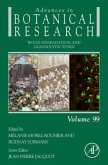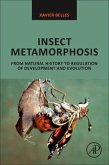Physiology, Behavior, Genomics of Social Insects provides comprehensive information on the social insect groups described, including new and unique reviews on emerging model social organisms.
The book's interdisciplinary approach integrates behavior, genomics, and physiology, providing readers with great insights into the present state of a rapidly expanding area of research. It also discusses areas where new research tools will bring hope to longstanding problems.
The book's interdisciplinary approach integrates behavior, genomics, and physiology, providing readers with great insights into the present state of a rapidly expanding area of research. It also discusses areas where new research tools will bring hope to longstanding problems.
"This book is highly recommended for all academics interested in the genomic and physiological underpinnings of behavior among social insects. Those new to the field, especially incoming graduate students, will find this is an excellent primer that places the most recent findings in a historical and theoretical context." --The Quarterly Review of Biology







